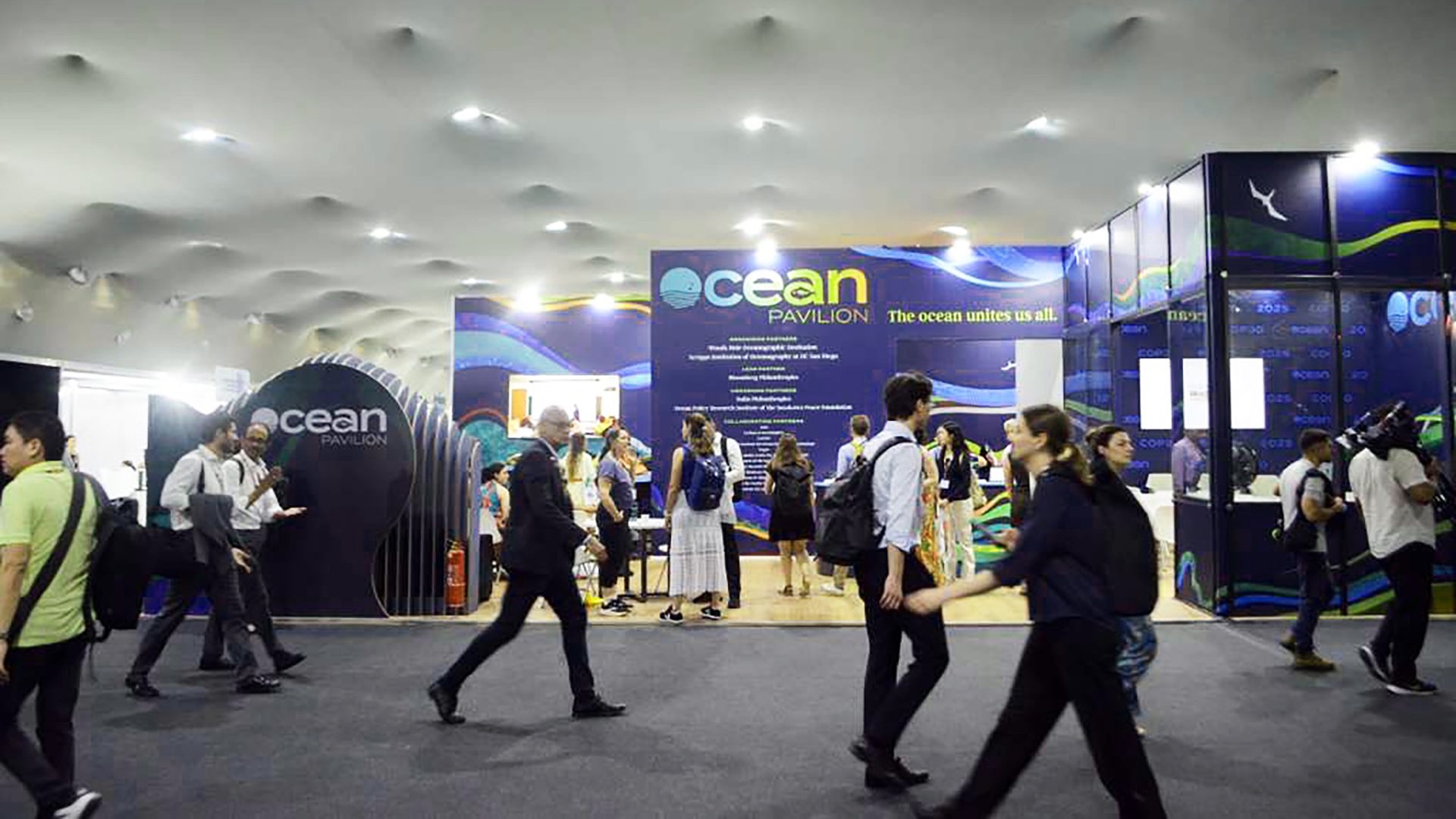Week One at COP30: Ocean voices rise in Belém

by Ken Kostel
Last week in Belém, Brazil, the Ocean Pavilion marked its fourth year at a United Nations climate conference, known as the Conference of Parties (COP). The pavilion and its partner organizations provide a crucial forum for scientists, policymakers, and advocates to champion the ocean’s role in tackling the climate crisis.
COP30 has been widely viewed as an inflection point, where governments are finally recognizing the ocean as a vital part of climate solutions, and not just a casualty of change. And momentum toward this point has been building all year.
The 2025 UN Ocean Conference (UNOC3) brought civil, scientific, and financial leaders into unprecedented alignment around ocean-based climate action. UNOC3 saw the launch of a new framework for integrating ocean health into national climate goals, as well as accelerated progress on the so-called High Seas Treaty, which was adopted by 61 countries in September to being its formal path toward legal enaction in January. And just last month, the quadrennial World Conservation Congress passed a landmark resolution calling for the protection of the ocean twilight zone and the biodiversity and climate benefits it provides.
Yet progress has not come smoothly. When the COP30 Presidency released its first public communiqué earlier this year, there was no mention of the ocean. Pushback from the marine community prompted the host country, Brazil, to name Marinez Scherer the first-ever Ocean Envoy for a UN climate conference. On the first day of COP30, Scherer addressed the world leaders assembled for the opening plenary of the conference—the only special envoy to do so—where she underscored one of the critical challenges before them: Less than 1% of global climate finance currently supports ocean-based solutions, despite their potential to deliver up to 35% of the emission reductions needed to keep global temperature goals within reach.
COP30 itself has also faced challenges. Many regular participants of a climate COP skipped going to Belém, citing high costs, scarce accommodations, and limited infrastructure. Inside the conference zones, those strains showed—air conditioning faltered, catering and technical services were inconsistent, and the Blue Zone had to be temporarily cleared after a clash between indigenous protesters and security personnel.
Negotiations also opened amid a slate of unresolved issues that threatened to delay talks, including how to measure adaptation, reconciling uneven or absent national climate commitments, and the need to bridge the gap between technical ambition and financial support for mitigation and adaptation. Typically, the first week of a COP is consumed by discussions over issues like these and which make it to the formal agenda. But the COP Presidency surprised many by reaching an early compromise that allowed substantive talks began more quickly than expected.
At the Ocean Pavilion, the energy was similarly high. Opening sessions examined Pacific-based climate solutions, the use of environmental DNA (eDNA) and storytelling in advancing ocean action, and the challenges facing marine carbon dioxide removal on the high seas. On the second day, California Governor Gavin Newsom stopped by the pavilion, underscoring the growing role of sub-national leadership. And later in the week, an all-star panel introduced the Belém Ocean Declaration, a sweeping call to accelerate ocean-based climate action. Author Kim Stanley Robinson, best known for his near-future climate novel, The Ministry for the Future, made a keynote address at the event and described the Declaration as a historic statement.

“Negotiations have their own rhythm,” said Woods Hole Oceanographic Institution President & Director Peter de Menocal. "And the measure of success isn’t just what’s agreed when the conference ends on November 21, it’s what’s already been achieved along the way. It’s clear the ocean is now recognized as central to climate mitigation, adaptation, and stabilization. Turning that recognition into programs and budgets will take time, but the tide has turned, and we’re on the right course.”
